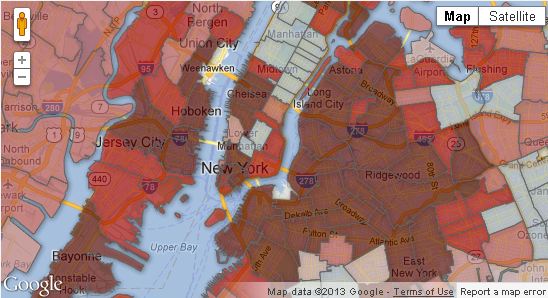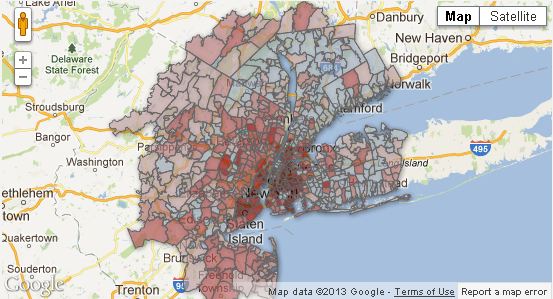NEW YORK—The number of people commuting into Manhattan from outside Manhattan rose significantly from 2002 to 2010, especially in nearby neighborhoods in Brooklyn and New Jersey but also in counties very far away from the island.
From 2000 to 2010, the share of New York’s workforce living within 5 miles of the Central Business District increased by 1.3 percent, found Carson Qing, graduate research assistant at New York University’s Rudin Center for Transportation Policy and Management. Qing crunched numbers from the U.S. Census Bureau.
“What we’re seeing is that areas that are closer to the core of the region, which is Manhattan and maybe parts of downtown Brooklyn or Jersey City, are attracting a greater share of jobs,” said Qing in a phone interview, calling the phenomenon “a re-centralization of employment in the New York City region.”
After discovering more people working in New York’s core, Qing wanted to discover where the people are living, so he posted the findings of follow-up research on where Manhattan commuters are living, broken down by zip code.
The biggest increase in commuters into Manhattan from 2002 to 2010 came from five neighborhoods—Williamsburg (+5405), the Paulus Hook section of Jersey City (+4262), Downtown Brooklyn (+3598), Williamsburg/Bedford-Stuyvesant (+3373), and Greenpoint (+3139)—according to Qing’s research.
Mayor Michael Bloomberg said in his recent State of the City speech that the ferry, designed as a pilot project, would be made permanent.
There was also an increase in people coming into Manhattan to work from other zip codes across Brooklyn and outlying areas, mostly from New Jersey.
The growth in New Jersey commuters is not limited to so-called “one-seat” rides into Manhattan, either, which refers to getting into Manhattan by public transit without having to switch to another line.
“Communities in Bergen and Passaic Counties along the Main-Bergen and the Pascack Valley rail lines, where Manhattan-bound rail trips require transfers at either Secaucus Junction or Hoboken to enter Manhattan, have also seen significant increases in commuters to Manhattan: these include towns such as Fair Lawn (+39% increase), Paramus (+30%), and Lodi (+47%),” wrote Qing.
On the other hand, the number of commuters from a host of districts has neither increased or decreased, mostly from Eastern Queens, north of Manhattan, or Long Island.
Qing and other researchers with the Rudin Center released a report, “Commuting to Manhattan,” in March 2012, examining where commuters to Manhattan live, but Qing measured growth this time by zip code instead of county.
“At the zip code level, it just seems to be a lot more meaningful because you can pinpoint which specific areas that have seen growth,” he said.
The earlier report found that more than two-thirds of Manhattan workers lived in New York City as of 2009, and more than three-quarters of Manhattan workers use mass transit to get to work.
As far as future research, Qing said that he is interested in studying whether the theory is true that people and economic activity have been moving back into the center of cities. So far, the data he has indicates only New York City and San Francisco have been undergoing the trend of “re-centralization,” he said.
“I’m a little skeptical about that after looking at the jobs data,” said Qing. “I have to think: Are the jobs following the people or are the people following the jobs?”











